The Hound Dog Breeds Group is a diverse cluster of dogs that range in size from the small Pocket Beagle who stands less than 13 inches and weighs about 15 pounds, to the Irish Wolfhound, who stands an astonishing 33 to 35 inches high and weighs upwards of 140 pounds.

Whether you think of hound dog breeds as hunters best friends, or as easy going house pets, they all have at least one thing in common. These breeds were originally bred to hunt or track either larger game or small vermin, and that is how they differ from sporting dogs who hunt birds.
If you are intent on finding other similarities, you might be searching for a while. They don’t look alike, act alike, or even hunt alike. You might even think they shouldn’t belong to the same species!
But all hound dog breeds do share one thing in common. They aren’t called the Working group, but they do have a strong work ethic. Once on a trail they are single-minded and determined, and it is usually hard if not impossible to distract them from their mission.
Most of the world’s kennel registries have divided the hounds into two broad groups: the Sight Hounds and the Scent Hounds, and depending on whatever grouping the dog falls determines his style of hunting.
While many of these dogs continue to perform the job they were developed for, most are companions or pampered family dogs. So we know historically, that early breeders developed these dogs to do one of two things: See or Smell.
Some talented breeds found ways to perform both. Those dogs that have an extraordinary sense of smell are classified as Scent Hounds.
Sight Hounds, on the other hand, can hunt based on an instinct that allows them to see movement and then once spotted, take off after it.
Hound Dog Breeds – Scenthounds
Scent Hounds have several things in common. They have long droopy ears, large nasal cavities, loose wet lips that often drool, and a bark that is hard to ignore. They are not fast runners like their cousins the sight hounds.
They can follow their prey simply by keeping their noses to the ground. They come in several sizes, but most are medium to large breed dogs. They come in different colors, but most are some shade of brown or tan, earthy colors.
They also have a distinctive vocal sound called baying, which is neither a bark or a howl. Scent Hounds include the Bloodhounds, Beagles, Coonhounds, Dachshunds, Foxhounds, Harriers, Petit Basset Griffon Vendeens and the Otterhounds.
As a group, they can be hard to train because they are stubborn. Most find them charming pets because they are just plain fun. They are amusing, intelligent, and very loyal.
They generally get along with children and other dogs. They do not, however, do well around small pets (mice, hamsters, gerbils, and so forth) because they see them as prey.
Their owners love their docile nature, but they are strong-willed and sometimes hard to train. They require an authoritative owner willing to enforce rules in a positive, kind way.
Some drool. As long as you don’t mind the drool and don’t require instant training success, this group of dogs makes excellent pets.
Their noses are legendary, the most famous of course is the Bloodhound. They can catch a scent and follow it for hours or days.
Some have been mistakenly labeled as vicious, especially during the time of slavery in the U.S. These dogs were used to track runaway slaves, but their job was done the second they found what they were searching for.
The most popular of the scent hounds is the Beagle, made famous by the comic strip, Peanuts. A very “terrier” like scent hound is the little Dachshund, which makes a great family pet. Their prey is small and may include mice or rats.
Sight Hounds are the sprinters in the dog world. Some are so fast that they would win every race with a human. Greyhounds, for example, have been clocked at 40 mph (64 kph). They can take off after anything that resembles prey so secure fenced in yards is a must for most sighthounds.
Other terms you may have encountered for this group include the gazehounds or coursing hounds. They have an excellent vision that can detect even the slightest movement from a far distance.
Most of the sight hounds are sensitive and will respond poorly to harsh treatment. They are loyal and want to please, so most sight hounds are easier to train than the scent hounds.
They do well with other dogs and children, but small pocket pets will be viewed as prey. Hamsters and Gerbils will not fare well in a home with a sight hound.
They are very fast runners so they should never be off leash when outdoors. A securely fenced yard is ideal for scent hounds to run freely without fear of them taking off at something that looks like it could be prey.
This group is diverse in size from tiny to giant. Colors vary but are mostly shades of brown and tan. Most have very short coats and little grooming requirements.
The sight hounds include the Whippets, Italian Greyhounds, Pharoh Hounds, Basenjis, Borzois, Irish Wolfhounds, Lurchers, Salukis and Scottish Deerhounds.
The Hound Dog Breeds (AKC)
Afghan Hound

The Afghan Hound is aloof and distinguished, with it’s own streak of independence. If you’re looking for a dog which you can form a strong bond with, then this may not be the best breed for you!
They are intelligent, agile and loyal and need a fair amount of exercise to stop them from becoming destructive. A large back yard is ideal to let them run around in but make sure the fence is high enough as these agile dogs can jump great heights!
Alpine Dachsbracke

The Alpine Dachsbracke originated in Austria as a hunting dog. This is a scent hound that can follow wounded game animals over rough and tough terrain in mountainous grounds. They make excellent family dogs, as they get on well with children and other dogs.
American Coonhound (Redtick Coonhound)

Origins: The United States
Size: Large
Grooming: Easy
Training: Time Consuming
Recognition: FCI: Group 6, AKC: Hounds, CKC: Hounds, NZKC: Hounds, UKC: Scenthounds
American Dingo (aka Carolina Dog)

Origins: U.S.A.
Size: Medium
Grooming: Easy
Training: Time Consuming
Recognition: UKC (Sighthound & Pariah)
American Foxhound
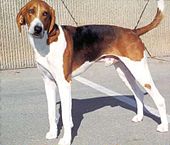
Origins: The United States
Size:Medium to Large
Grooming: Easy
Training: Average
Recognition: FCI: Group 6, AKC: Hounds, CKC: Hounds, UKC: Scenthounds
Azawakh
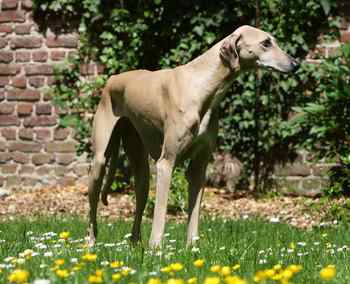
Origins: Mali & Egypt
Size: Large
Grooming: Minimal
Training: Average
Recognition: FCI: Group 10, AKC: FSS, ANKC: Hounds, KC: Hounds, NZKC: Hounds, UKC: Sighthounds. Pariahs
Basenji

The Basenji is one of the most unique hound dog breeds, for many different reasons, both physically, and emotionally. One of the most unique characteristics that stand out from the others is that the Basenji is a “barkless” breed. They do not bark like other breeds of dogs, but with this being said, they are not entirely silent.
This is a very curious and alert breed of dog, but they have the tendency to be reserved when it comes to strangers. Make sure you properly train and socialize your Basenji at a young age so they are not spooked or intimidated by strangers when they are an adult.
Basset Fauve de Bretagne
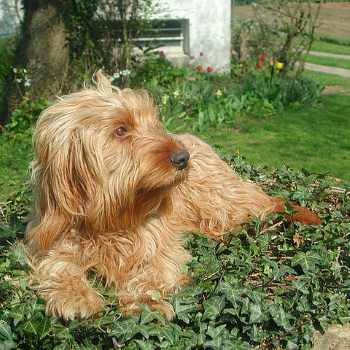
Griffon Fauve de Bretagne
(a.k.a. Fawn Brittany Griffon)
Origins: France
Size: Medium
Grooming: Average
Training: Average
Recognition: AKC: (FSS), ANKC: Hounds, UK: Hounds, FCI: Group 6, UKC: Scenthound
Also Griffon Fauve de Bretagne
or Fawn Brittany Griffon
Basset Hound

The Basset Hound may just be one of the most placid, gentle dogs in the hound group, with a nose to scent only surpassed by the Bloodhound. A friend to all, but they need a tolerant owner who doesn’t mind a little drool, smell, and shedding.
This breed tends to be less reactive to their owners’ comments and more understanding of chaotic households. While this is great for large families and having guests over, it can make training a bit difficult.
Bavarian Mountain Hound

The Bavarian Mountain Hound was bred to track wounded game in the mountains of Southern Germany. This is a light, medium-size dog, with an excellent scenting ability, even for a dog.
They can be suspicious of strangers, and need a lot of exercise to stay healthy. They can make good family dogs, if you have the space!
Beagle

The Beagle dog breed is a favorite breed of friendly, affectionate and energetic family dogs. They are known primarily for their friendliness and small size, making them not at all aggressive, and great for people of all ages.
Beagles are known as pack dogs, used to living and hunting in packs they are more accustomed to the company of other canines or people. It’s not uncommon to see a Beagle cozying up to a guest in the house.
Black and Tan Coonhound

Origins: United States
Size: Medium to Large
Grooming: Easy
Training: Average
Recognition: AKC (Hound), ANKC (Hound), CKC (Hounds), FCI (Group 6), NZKC (Hound, UKC (Scenthound)
Originally bred to hunt Raccoons, the Black and Tan Coonhound is an easy-going family companion, a great family dog, and very patient with children. With a mind of their own, they need patient and careful training, as well as a securely fenced yard.
Bloodhound
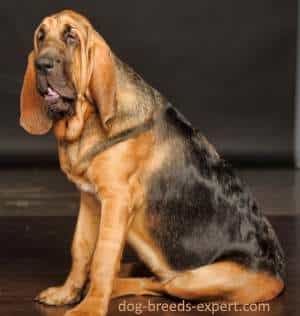
Bloodhounds are medium sized dogs that are great for families. These dogs are social and affectionate with their owners, although their primary interest will always be fascinating smells.
The Bloodhound is famous for its incredible nose, which holds true to this day. These dogs will often be seen with their heads near to the ground, tracing the source of an exciting scent.
Bluetick Coonhound

Origins: The United States
Size: Large
Grooming: Easy
Training: Challenging
Recognition: AKC (Hound). UKC (Scenthound), NZKC (Hound)
Borzoi

Also once known as the Russian Wolfhound, the Borzoi was bred to be fast enough to catch a wolf, and then tough enough to bring it down. Of course, one dog could not do this alone – they generally hunted in a small pack of 2 or 3, pinning the wolf for long enough for the hunter to kill it.
Like all sight hounds, Borzoi have an independent nature, and can become bored easily. If let out in a big open space, they will range over long distances very quickly, with no regard for motor traffic. You need to be sure that the space is secure if you are going to let your Borzoi off-leash.
Cirneco dell’Etna

Origins: Sicily / Italy
Size: Small
Grooming: Minimal
Training: Time Consuming
Recognition, AKC (Hounds), UKC (Sighthound & Pariah), FCI (Group 5)
Dachshund

Dachshunds are probably one of the most recognised breeds in the world, and this breed of dog comes in six varieties – Long Haired, Short Haired and Wire Haired and all three of these varieties come in Standard size and Miniature size.
Although they were bred for life in the country, life in the town seems to fit them well also as they are very adaptable. The miniature versions especially can be apartment dogs as long as they can be taken out for walks daily.
Drever

Origins: Sweden
Size: Medium
Grooming: Easy
Training: Easy
Recognition: CKC (Hounds), AKC (FSS), FCI (Group 6), UKC (Scenthound)
English Foxhound

Origins: England
Size: Large
Grooming: Minimal
Training: Average
Recognition , AKC (Hound), FCI (Group 6), KC (Hound), UKC (Scenthound), CKC (Hounds)
Grand Basset Griffon Vendeen

Origins: France
Size: Medium
Grooming: Average
Training: Average
Recognition: AKC: FSS, ANKC: Hound, NZKC: Hound, UKC: Scenthound
Greyhound

Of the hound dog breeds, not only does the Greyhound hold the record as the fastest dog breed, able to reach speeds as staggering as 40 miles per hour, they also have a somewhat “cat-like” and docile personality that can almost be described as lazy.
It may seem odd for the fastest breed of dog to have such a laid-back and easy-going temperament, but if you are in the market for essentially a giant lap dog, then this might be the perfect match for you.
Hamiltonstovare

Origins: Sweden
Size: Large
Grooming: Minimal
Training: Average
Recognition: FCI: Group 6; AKC: FSS; ANKC: Hounds; KC: Hounds; NZKC: Hounds;
UKC: Scenthound
Harrier
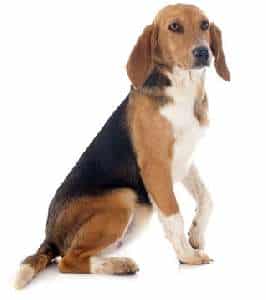
Origins: United Kingdom
Size: Medium to Large
Grooming: Easy
Training: Time Consuming
Recognition: FCI: Group 6; AKC: Hounds; ANKC: Hounds; CKC: Hounds; NZKC: Hounds UKC: Scenthound
Ibizan Hound

Origins: Spain
Size: Medium
Grooming: Minimal
Training: Time Consuming
Recognition: FCI: Group 5, AKC: Hounds, ANKC: Hounds, CKC: Hounds, KC: Hounds, NZKC: Hounds, UKC: Sighthounds and Pariahs.
Irish Wolfhound
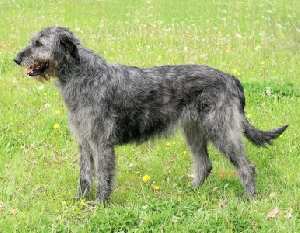
The Irish Wolfhound dog breed belongs to the Giant dog breed group, standing at a minimum of 32 inches tall at the withers (shoulders) for male dogs. That’s nearly 3 feet tall, at the shoulder!
This a very calm and confident breed that likes to be friends with everyone, but in a calm, dignified manner, unlike a Labrador Retriever for example, that can be very excitable. The Wolfhound will wander around without any great exuberance, and loves to be petted and stroked. They love human company, and will seek it out.
Norwegian Elkhound

Origins: Norway
Size: Medium
Grooming: Average
Training: Time Consuming
Recognition: FCI: Group 5, AKC: Hounds, ANKC: Hounds, CKC: Hounds, KC: Hounds, NZKC: Hounds, UKC: Northern Breeds
Otterhound

Origins: Great Britain
Size: Large to Giant
Grooming: Easy
Training: Easy
Recognition: FCI: Group 6, AKC: Hounds, ANKC: Hounds, CKC: Hounds, KC: Hounds, NZKC: Hounds, UKC: Scenthound
Norrbottenspets

Origins: Sweden
Size: Medium
Grooming: Average
Training: Time Consuming
Recognition: FCI: Group 5, AKC: FSS, CKC: Hounds, UKC: Northern Breeds
Peruvian Inca Orchid

Origins: Peru
Size: Medium
Grooming: Easy
Training: Average
Recognition: FCI: Group, AKC: Hound (FSS), UKC: Sighthound & Pariah
Petit Basset Griffon Vendeen

Origins: France
Size: Medium
Grooming: Average
Training: Average
Recognition:, FCI: Group 6, AKC: Hound, ANKC: Hound, CKC: Hound, KC: Hound, NZKC: Hound, UKC: Scenthound
Pharoah Hound

Origins: Malta
Size: Medium to Large
Grooming: Easy
Training: Relatively Easy
Recognition:, FCI: Group 5, AKC: Hounds, ANKC: Hounds, CKC: Hounds, KC: Hounds, NZKC: Hounds, UKC: Sighthounds & Pariah
Plott Hound

The Plott Hound was developed in the southern states of the USA by Henry Plott originally to hunt bear, wild Boar and mountain lion. Then it became used in hunting raccoon, at which it excelled. It is included in the AKC list of Coonhound breeds.
Portuguese Podengo
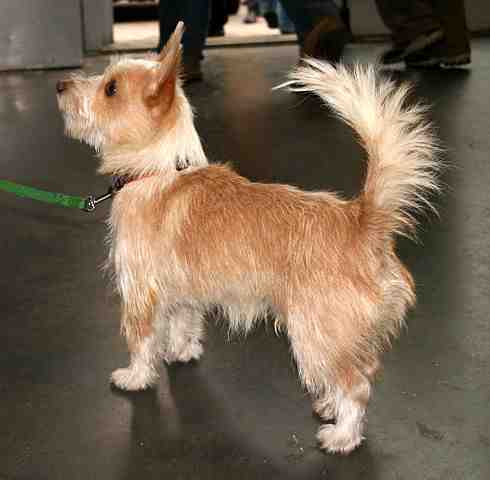
Origins: Portugal
Size: 3 Sizes: Small, Medium, Large
Grooming: Easy
Training: Average
Recognition: FCI: Group 5, AKC: FSS, KC: Hound, UKC: Sighthound & Pariah
Redbone Coonhound

Origins: United States
Size: Large
Grooming: Easy
Training: Average
Recognition: AKC: Hound, UKC: Scenthound
A large dog weighing up to 70lbs, the Redbone Coonhound was bred in the Southern states of the USA for hunting game by scent. They are muscular dogs that can follow a scent trail over difficult and tough terrain for many hours.
At home, they are calm, amiable and affectionate, and love being in a family. They need daily exercise, and after a long run they will sleep the rest of the day away. Probably better suited to living in the country side as opposed to in a city.
Rhodesian Ridgeback

The Rhodesian Ridgeback is a large, powerful and athletic hound, originally from Rhodesia (now Zimbabwe) in Africa. These dogs were originally bred to protect the early white settlers in Africa, and to act as hunting dogs, particularly for hunting lions. They are also known as The African Lion Hound, for this reason.
Saluki
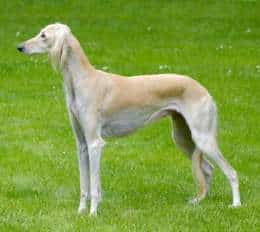
Saluki dogs are intelligent, and can become bored easily if they are left alone, or given simple tasks to do like fetch a ball or stick. As a result of its hunting background, it would much rather chase something, and it will tend to go after anything else that is running.
The Saluki dog breed is distrustful of strangers at first, and will bark if an unknown person approaches the home. Even when the owner lets the visitor enter the house, the Saluki will remain aloof, and watch the interaction between it’s master and the new visitor. Once it is clear that there is no threat, the dog will relax, and wander off to snooze in a corner.
Scottish Deerhound

The Scottish Deerhound is one of the world’s largest breeds, almost as tall as the Irish Wolfhound. It is tall and rangy, with a short but shaggy coat giving it an unkempt look. This is a very old breed, used by Scotlands’ clan chiefs to hunt and bring down big Red Deer, which could weigh up to 400lbs.
This is a breed that is placid, friendly and gentle. They are keen to please their human family, and they are good family dogs. While very good and patient with children, their sheer size and weight may intimidate or knock over a small child by accident.
Thai Ridgeback

Origins: Thailand
Size: Medium to Large
Grooming: Easy
Training: Time Consuming
Recognition: FCI: Group 5, AKC: FSS, UKC: Sighthounds & Pariahs
Transylvania Hound

Also Called Hungarian Hound, Erdelyi Kopo
Origins: Hungary
Size: Medium to Large
Grooming: Minimal
Training: Time Consuming
Recognition: FCI (Group 6), UKC (Scenthound)
Treeing Walker Coonhound

The Treeing Walker Coonhound is one of 6 Coonhound breeds recognized by the American Kennel Club. This is a friendly, amiable dog that gets on well with children and other dogs, but becomes a tenacious hunter when it picks up a scent.
Whippet

Origins: United Kingdom
Size: Medium
Grooming: Easy
Training: Average
Recognition: FCI: Group 10, AKC: Hound, ANKC: Hound, CKC: Hound, KC: Hound, NZKC: Hound, UKC: Sighthound & Pariah
The Whippet originated in the Northern counties of the U.K., and was used for hunting rabbits and hares as well as dog racing. They are among the fastest of all dogs, able to reach 35mph. However at home they will curl up into a small ball and snooze away the afternoon! The ideal dog for apartment living due to their small size, quiet nature (they rarely bark), low-shedding coat and lack of ‘doggy smell’.
This list of Hound dog breeds is not exhaustive – please tell us if you think any other breeds should be included!



